
What Is Data Strategy?
Data strategy is the intentional, organization-wide approach for managing, analyzing, and leveraging data to achieve core business objectives. Rather than viewing data as a siloed IT resource, today’s business leaders must recognize data as the backbone of every strategic decision, fueling growth, innovation, and operational resilience. This is why an effective data strategy isn’t an isolated initiative; it’s a long-term blueprint woven seamlessly into your overall business strategy. Many organizations turn to Data Strategy Consulting to develop and operationalize this blueprint with clarity, scalability, and measurable impact.
Incorporating data strategy into the heart of business strategy is non-negotiable in a world where data—big, small, structured, unstructured—touches every business process. It’s no longer viable to treat your data as a background actor. Instead, leaders need to ensure that data flows into planning, market analysis, product development, and customer engagement, shaping actionable insights and flexible pivots. When business strategy integration is done well, data strategy becomes the multiplier for business value.
What Are The Key Pillars Of Data Strategy? Why They Must Sync With The Overall Business Strategy
A misaligned data strategy is like a high-performance engine stuck in neutral—it holds potential but delivers little traction. By directly syncing data initiatives with business goals, organizations not only avoid costly missteps but also unlock strategic agility. You create a data-driven culture where every department speaks the language of value and evidence over gut feel and guesswork. Embedding a data strategy across the entire organization ensures that people, processes, and technology are unified for maximum impact. This unity accelerates decision-making, enabling informed decisions, inspires innovation, and streamlines risk management—all while keeping you ahead of industry disruptors.
The Value of a Unified Approach: Data Isn’t a Separate Entity
Historically, many firms have treated data as a tech department’s pet project. That outdated mentality is a recipe for irrelevance. To thrive, forward-thinking organizations knit data into their very DNA. By unifying data initiatives with business priorities, you ensure investments in analytics, reporting, or tools like Power BI deliver measurable business outcomes, not just pretty dashboards that gather dust. This approach breaks down barriers between business units and supports making data accessible across the organization, helping to eliminate data silos and foster collaboration. With consultative partners like P3 Adaptive, companies make their data strategy work for them, not the other way around.
How does a modern data strategy position you for both offense and defense?
A robust data strategy equips your organization to play offense—seizing new markets, launching innovative products, and uncovering hidden opportunities. At the same time, it shores up your defenses, enabling rapid response to regulatory changes and ensuring regulatory compliance as a key defensive benefit, as well as addressing cyber threats or supply chain hiccups. By shifting from a reactive mindset to one of proactive opportunity, you’re not just dodging pitfalls; you’re staying on the puck (not just where it is, but where it’s going).
Primary Business Outcomes Driven by Sound Data Strategies
What’s in it for the business? Strategic data use drives efficiency, cost savings, and greater revenue opportunities. Enterprises with a clear data strategy see faster time-to-insight, enabling data-driven decisions and delivering actionable insights, empowered teams with the ability to optimize operations, reduced risks, and a culture of continuous improvement—all of which are critical for securing a competitive edge and stakeholder trust. This is why P3 Adaptive focuses relentlessly on aligning your data initiatives with concrete, high-value business targets—ensuring every byte of your data works as hard as you do.
What Are the 5 Pillars of Data Strategy?
At the heart of a robust data strategy lie five essential pillars: data governance, data architecture, data operations, analytics and insights, and data security (with privacy baked in). Think of these as the five points of a star that mutually reinforce each other—neglecting even one leaves your entire constellation wobbling off course. These pillars aren’t just theoretical constructs; they’re the blueprint for making data not just an asset, but your organization’s competitive edge. A good data strategy and an effective data strategy are both built on these five pillars, enabling organizations to manage, utilize, and leverage data effectively while ensuring security, compliance, and long-term growth.
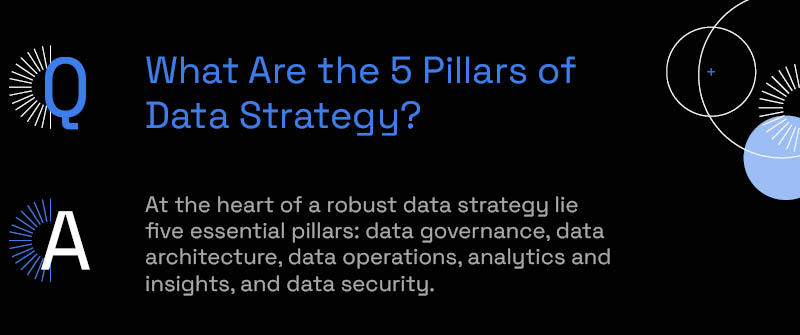
What Are the 5 Pillars of Data Strategy?
The five main pillars of data strategy are governance, architecture, operations, analytics/insights, and security/privacy. Each pillar represents a discipline essential to transforming raw data into impactful, secure, and actionable business intelligence. These five pillars support organizations at every stage of their data journey, ensuring that data management and analytics processes are aligned with business goals.
When these pillars work in unison, organizations empower decision-makers to act confidently, unlock value, and advance their analytical maturity. Let’s break down how these pillars fit into the strategic puzzle.
1. Data Governance
Data governance consulting is your playbook for data standards, policies, and accountability. It ensures your data is accurate, reliable, and compliant, while also maintaining data integrity and supporting enterprise data management. Effective governance keeps everyone rowing in the same direction, minimizing regulatory risks and enabling trust in the insights drawn from your systems. Ignore it, and you court chaos—analytics powered by the Wild West leads to confusion, not clarity.
2. Data Architecture
This pillar covers the technical scaffolding—the systems and platforms (think Microsoft Fabric, Azure, modern data lakes, data platforms, data warehouse, and data storage solutions) that store and move your data. Good data architecture ensures your data is accessible, scalable, and structured to support real-time decision-making. It’s not just about flashy technology; it’s about building a flexible, future-proof foundation that accommodates business evolution and avoids costly rework down the line.
3. Data Operations
Data operations (Ops) ensure your data flows smoothly from source to insight. This includes integration, data quality management, and automation, reducing manual effort through automated data ingestion and data transformation. Streamlined data operations mean less time wrangling spreadsheets and more time making data-driven moves. Efficient ops also unlock opportunities for self-service analytics, freeing up your teams to innovate instead of firefighting breakdowns.
4. Analytics and Insights
What is the purpose of all this infrastructure and governance? Delivering actionable analytics and insights, including data analysis, data visualization, and advanced analytics. This pillar is about making your data work for you: strategic dashboards, predictive models, or AI-driven scenarios—capabilities often delivered by data scientists who leverage sophisticated techniques to extract value from your data—in tools like Power BI. Done right, analytics transforms data into foresight and fuels a decision-making culture across your enterprise, not just in IT.
5. Data Security and Privacy
No data strategy survives without security at its core. Data security and privacy ensure that sensitive information is protected, compliant, and trusted by both employees and customers. Strong data practices underpin effective security and privacy by establishing robust processes, policies, and frameworks that safeguard data quality and accessibility. In an era of cyber risk and tightening regulations, a proactive approach to security guards your reputation and bottom line. It’s not just about locks and firewalls; it’s about building a resilient culture of trust.
Why These Pillars Need to Work Together
The magic happens when these pillars reinforce one another. Flawless analytics are irrelevant if your data isn’t governed. Cutting-edge architecture is a paper tiger if operations are neglected. And security gaps can unravel even the most sophisticated data initiatives. At P3 Adaptive, we evangelize a balanced focus: guiding business leaders to prioritize these pillars not as a checklist, but as an interconnected framework to drive measurable impact—faster, smarter, and with far less drama. To achieve this, ensure your data ecosystem provides all the capabilities needed for success.
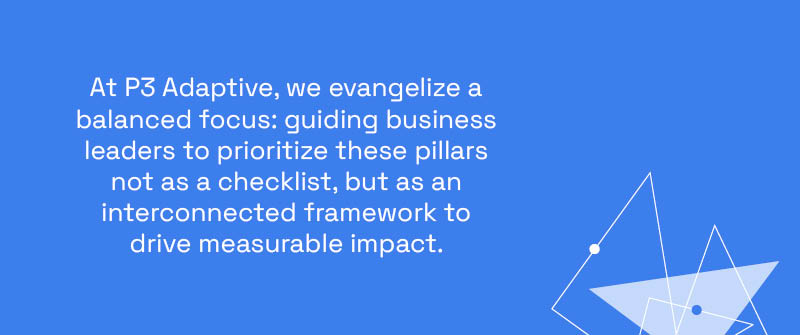
The Cost of Ignoring a Pillar
Drop just one pillar, and you court disaster. Poor governance leads to unreliable information. Shortcut security exposes the organization to threats. Weak architecture frustrates users and strangles innovation. Investing in all five ultimately means building a data strategy that doesn’t just keep up, but helps you break away from the competition.
The path to value isn’t paved with buzzwords—it’s constructed, pillar by pillar, with intent. Only by investing in all pillars can organizations truly leverage data to drive business growth and innovation. Ready to fortify your strategy? Let’s talk about the best way to make your data pillars unshakeable.
How Do You Build a Strong Data Strategy Framework?
A data strategy framework is the blueprint that guides your organization in leveraging data as a true business asset. It translates high-level ambitions into practical steps, ensuring that not just the technical teams, but your entire leadership is aligned and empowered. This framework isn’t just about implementing tools—it is about developing a cohesive, agile, and scalable approach for unlocking business value from your data investments in an ever-shifting landscape. A strong data infrastructure is essential to enable organizations to access, analyze, and utilize data effectively, ensuring they meet business objectives and drive continuous improvement. When built right, it enables you not only to extract insights but to embed continuous improvement and measurable impact at every level of your business.
What Are the Essential Components of a Data Strategy Framework?
At its core, a robust data strategy framework includes several key components: vision and objectives, governance, architecture design, analytics enablement, and secure operations. Start with a clear understanding of your overarching business goals—whether it’s operational efficiency, market expansion, or competitive differentiation. Map out data sources, define standards, policies, and assign roles to ensure everyone knows not only what data exists, but also how it moves securely across the business. Define the operating model by selecting from different operating models—such as decentralized, centralized, or hybrid—to structure roles, decision-making, and support for data activities throughout the organization. Prioritize frequent cross-team reviews, so your strategy adapts to realities rather than gathering dust on the shelf.
Step-by-Step: Developing and Evolving Your Framework
Begin with stakeholder interviews and business context mapping. Next, create guiding principles for data use, considering privacy, compliance, and risk appetite, and focus on building data literacy through targeted training programs to empower employees. Build out your data architecture—think where Power BI consulting and Microsoft Fabric integration provide maximum leverage for unifying, analyzing, and visualizing your data. Set up regular cadence for feedback—using dashboards, scorecards, or even direct check-ins with leadership—to measure progress and iterate on the framework. This is not a one-time project; rather, it’s a living foundation your business can adjust as markets and technologies evolve.
Aligning the Framework With Business Goals—in Practice
Too many organizations fall into the trap of adopting the latest tech trend for its own sake. AI, for instance, is powerful only when closely tied to tangible business outcomes: automating manual reports, predicting sales churn, or unlocking new market insights. Use your framework to ruthlessly prioritize projects that support business goals. Ensure business users are empowered to leverage the framework for their needs, enabling non-technical stakeholders to access and utilize data effectively. A well-structured framework, supported by expert consulting (like what we offer at P3 Adaptive), makes it easy to justify investments to the boardroom, not just the IT department.
Why Continuous Feedback Loops Matter
Business moves fast, and so do your data needs. Your data strategy framework must include built-in mechanisms for learning and refining as you go. Leverage insights from tools such as Power BI and capabilities within Microsoft Fabric to monitor usage, identify bottlenecks, and pivot quickly. Collecting and analyzing more data supports ongoing improvement, helping your organization adapt and evolve. This not only boosts agility, but also builds a culture of data confidence—empowering leaders to make smarter decisions, faster.
Ultimately, the smartest framework is the one that’s actionable, measurable, and always connected to your business priorities. If your data strategy still lives in the land of wishful thinking, it might be time for a reality check—and P3 Adaptive is here to guide you every step of the way.
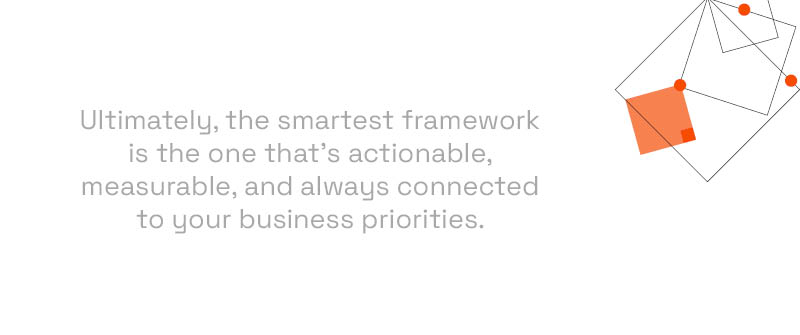
What is the Most Important Aspect of Data Strategy for a Client?
The most important aspect of data strategy for clients is ensuring that every data initiative is strategically and unequivocally aligned with business objectives that genuinely matter to the organization. Decision-makers shouldn’t settle for data projects that merely produce dashboards — they should demand that their data strategy drives measurable ROI, sharpens competitive advantage, and sustains continuous improvements far beyond the first implementation. A strong data strategy helps organizations turn data into a strategic asset, enabling them to transform raw information into actionable insights that drive innovation and operational efficiency. With the pace of change in analytics and technology, a successful data strategy is not a one-off investment; it must be dynamic, evolving in lockstep with shifting business priorities and opportunities.
At the heart of a strategic alignment is the direct connection between data initiatives and tangible business outcomes, supporting the data journey from raw data to actionable insights. In practice, this means never starting a BI project “just because” — every data integration, every analytics dashboard, and every reporting effort should be evaluated by asking one simple question: How does this move the needle for the business? Whether it’s driving operational efficiencies, uncovering revenue opportunities, or enabling faster decision-making, business impact is the linchpin. Leaders should challenge their organizations to justify data spend in terms that matter at the C-suite: reducing cycle times, cutting costs, improving customer retention, or unlocking new lines of business.
However, the impact of data strategy can’t be a short-lived win. Sustaining value over time requires tools, processes, and — above all — a culture that continually adapts as business demands evolve. This is where many organizations falter: Initial excitement gives way to maintenance fatigue, and data assets become stale. Avoiding this trap means committing to ongoing training, iterative process improvement, and embedding data-driven thinking into day-to-day operations. A true client-centric data strategy is one that adapts, learns, and grows along with the business. Leveraging data to identify and respond to market trends ensures organizations can anticipate customer needs and support strategic decision-making for continued growth.
How Does P3 Adaptive Keep Clients Ahead of the Curve?
P3 Adaptive isn’t interested in checking boxes or delivering basic compliance. Our philosophy: Use your data strategy to play offense, not just defense. We help you spot opportunities hidden inside your data — not just the ones everyone else is chasing, but those unique to the DNA of your business. Through an ongoing partnership, we connect data initiatives directly to strategic targets. We develop a data strategy roadmap to guide implementation, prioritize quick wins, and ensure alignment with your business objectives. We also select technologies like Power BI and Microsoft Fabric that enable rapid response and maximum ROI. By building continuous feedback loops and fostering a culture of analytics, we ensure your organization doesn’t just keep pace — it leads.
How Do You Cultivate a Sustainable Data-Driven Culture?
Consistent business impact requires fostering an environment where data curiosity thrives and improvement is a daily habit. Practical steps include leadership buy-in, regular cross-team conversations about data opportunities, and implementing effective data collection practices to ensure data quality and accuracy, as well as creating feedback frameworks where insights directly inform action. Ultimately, the best data strategy for clients is one that empowers them to pivot quickly, innovate boldly, and always see clear, measurable results from their investment.
Examples: Bringing Data Strategy Pillars to Life
For business leaders and executives, the true power of data strategy emerges when its core pillars—governance, architecture, operations, analytics, and security—are woven into real business practices, transforming abstract frameworks into tangible outcomes. Today, data strategy is central to business operations, no longer just a byproduct but a driving force behind strategic decision-making and innovation. A well-executed data strategy doesn’t just set the foundation for compliance or technical soundness; it propels your organization to new heights of agility, innovation, and measurable ROI. Let’s explore how the integration of these pillars enables transformative decision-making and business value.
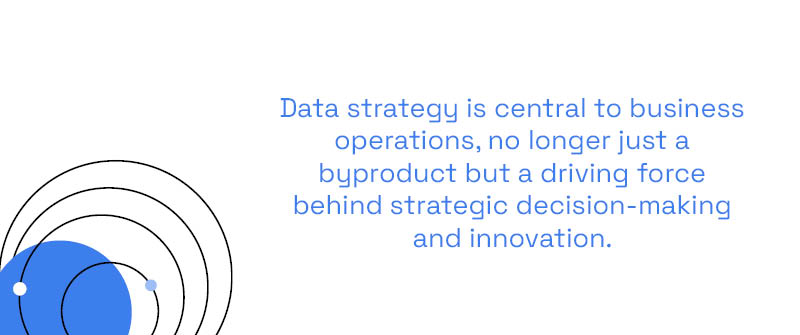
Illustrating Pillars in Action: From Data Silos to Strategic Value
Consider an enterprise where decision-making was previously bottlenecked by disconnected systems and unreliable reporting. By establishing strong governance, setting clear data ownership, applying authoritative standards, and emphasizing the importance of strong data management to ensure data quality, security, and accessibility, executives gained confidence in the integrity of reports flowing up to the boardroom. Leveraging robust data architecture and operations, previously untapped datasets became connected through platforms like Power BI, offering a single source of truth across the enterprise.
Once data was harmonized, the analytics pillar sprang to life—interactive dashboards and self-serve analytics empowered directors to dig into trends and spot opportunities in real-time. Meanwhile, integrated security practices (supported by frameworks like Microsoft Fabric) ensured sensitive insights were protected, without stifling the free flow of business-critical information.
Blending Modern Tools for Competitive Advantage
Today’s forward-thinking organizations combine consulting and modern platforms—think Power BI’s visual analytics or the AI-infused capabilities within Microsoft Fabric—to operationalize their data strategy. Data products play a crucial role in supporting scalable and collaborative data ecosystems, enabling automation, decentralized ownership, and real-time data use across the organization. With expert guidance from P3 Adaptive, companies don’t just deploy technology for technology’s sake. We help you clarify which data initiatives align directly with your unique goals, whether that’s margin improvement, faster service delivery, or identifying new revenue opportunities.
High-Level Example: Data in Action for Real Impact
Let’s say a mid-market manufacturer harnesses these pillars to overhaul their supply chain forecasting. By connecting and cleaning data from sales, production, and logistics, leaders moved from reactive to predictive planning, with data analysts playing a crucial role in supporting this transformation by delivering actionable insights. The result? A multi-million dollar impact on working capital and a newfound edge against larger competitors—all without a wild goose chase for the latest data trend. That’s actionable data strategy in the real world.
Is Your Data Strategy Performing Like a Real Business Asset?
If you’re ready to benchmark your organization’s pillars or move from talk to action, now’s the time. P3 Adaptive specializes in translating big ideas into business impact, emphasizing the strategic importance of data and analytics to understand customers, improve decision-making, and drive business value. We expertly blend strategy and tools like Power BI and Microsoft Fabric with an eye on ROI. Let’s explore what’s possible for your business.
Conclusion: Turning Data Strategy Talk Into Tangible Business Wins
How should organizations move forward with these data strategy pillars? To truly harness the power of your data, business leaders must advance beyond theory and integrate these five pillars—governance, architecture, operations, analytics, and security—directly into the heart of business strategy. The journey starts with a straightforward self-assessment and evolves into actionable, measurable steps that translate data ambitions into enduring business results. Success hinges on persistent alignment, continuous improvement, and a willingness to view data as a dynamic strategic asset, rather than just an IT initiative.
If there’s one lesson to take from the framework you’ve just explored, it’s this: the greatest ROI emerges not from sporadic data projects, but from consistency—making data a living, breathing part of your business DNA. Whether you’re leveraging Power BI to untangle operational complexities, shaping holistic insights with Microsoft Fabric, or simply ensuring your governance doesn’t gather digital dust, every pillar reinforces and multiplies the value of the others. When all five are robust and communicating, organizations don’t just react—they predict, they innovate, and they lead.
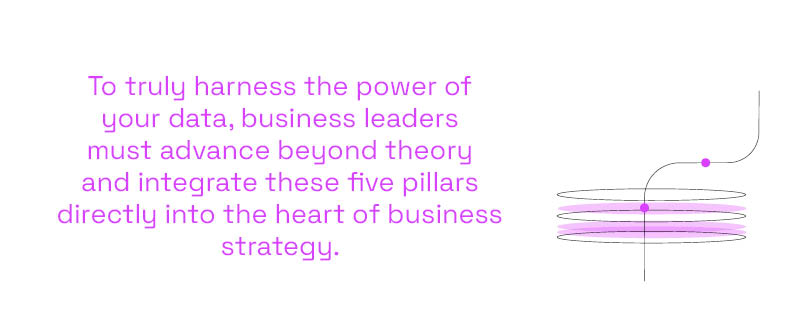
Now is the time for leaders to hold the mirror up and ask: Where do we stand today? Are our data initiatives supporting our business strategy, or are they scattered in silos? Building the bridge between data and decisions is less about grand declarations and more about tailored, practical progress. At P3 Adaptive, we empower executives like you to honestly evaluate your current state, identify the quick wins, and set the flywheel of improvement in motion. A strategic data checkup—guided by seasoned pros—can uncover hidden inefficiencies, unlock ROI you never knew existed, and chart your next move with clarity.
Final thought: Data’s true value is realized when it is woven through every layer of your organization, driving decisions, sparking new opportunities, and becoming inseparable from your business goals. It’s not an afterthought—it’s your competitive edge.
Ready to elevate your data strategy from conversation to transformation? Partner with P3 Adaptive to turn intention into impact. Our team brings the practical frameworks, strategic insight, and hands-on expertise you need to make your data a living force for growth. The right data strategy can enable organizations to achieve their full potential by empowering teams to access, analyze, and utilize data effectively. Start building your future of better, faster business decisions—get in touch today and discover how the right strategy makes all the difference.
Get in touch with a P3 team member